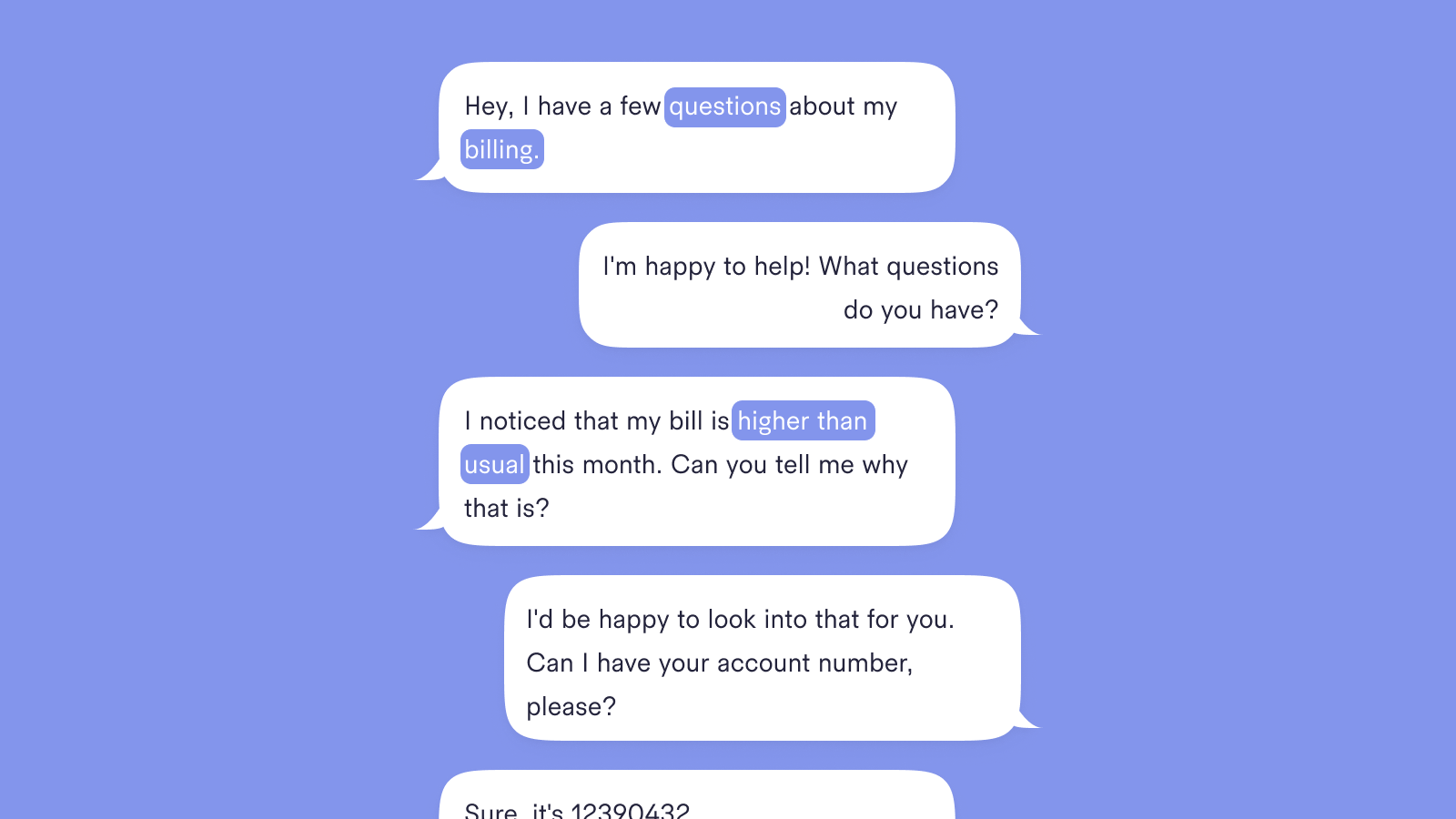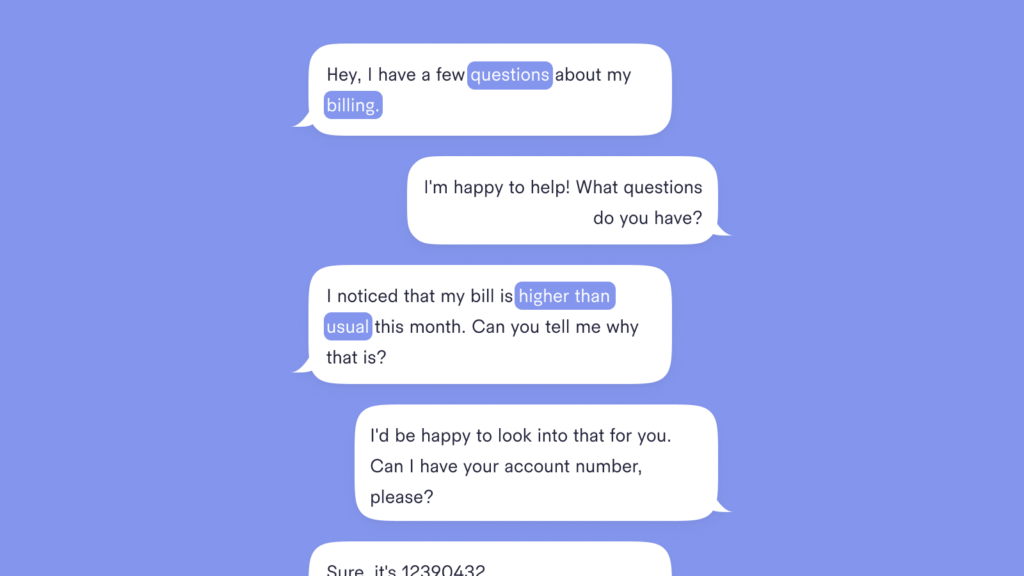
In our 2024 research report, 74% of companies reported that they are now using AI for both internal and customer-facing tools.
That includes the Conversation Intelligence space where companies are applying the same advanced research that is informing technology like ChatGPT, self-driving cars, and automated fraud detection to build suites of intelligent tools that sift through bulk customer data and generate insights.
In fact, the Conversation Intelligence market is expected to double over the next ten years in response to growing demand for AI-powered conversational data analysis.
AI summarization, or AI models that accurately summarize text, audio, and video, and LLMs, are further increasing the utility and robustness of Conversation Intelligence products. If your product team is looking to add to an existing Conversation Intelligence tool, or to build a Conversation Intelligence product from the ground up, AI summarization is a powerful building block to consider.
This article explores the basics of Conversation Intelligence and AI summarization before drilling into the mechanics behind incorporating AI summarization into a Conversation Intelligence tool, feature, or product.
Play around with AI summarization for conversational intelligence in our no-code playground
What is Conversation Intelligence?
89% of marketers agree that AI-powered Conversation Intelligence tools will be key to staying competitive moving forward.
What is Conversation Intelligence? Conversation Intelligence, or Conversational Intelligence AI, refers to tools that embed state-of-the-art AI models to extract key actionable insights from conversational data at scale.
Sales and marketing teams use Conversation Intelligence tools to identify risks, highlight opportunities, refine agent or representative coaching strategies, flag key sections of conversations, analyze buying patterns, and more.
What is AI summarization?
AI summarization models intelligently summarize text, audio, and video files into accurate, usable snippets.
Some companies are using dedicated AI summarization models to return summaries of different styles, like a single paragraph or bullet points, or even summaries with timestamps for summarized audio and video files.
For example, AssemblyAI’s Conversational Summarization Model is built specifically for two-person conversations, such as a 1:1 meeting, interview, or phone call, and can return summaries as bullets, long-form bullets (bullets verbose), a single paragraph, or headline.
Take this conversation as an example:
Speaker A: Hey, Susan. Have you got a sec? I have some questions about
my paycheck.
Speaker B: You bet, Emily. Pull up a chair.
Speaker A: Well, this is my first paycheck here in the States and there
are a few things I don't understand. First of all, what is this FICA,
and SUI Y tax, and why are there deductions both for Medicare and for
my health insurance plan?
Speaker B: OK, let's start from the top of your pay stub. This number
here represents your gross pay. Then here we have a series of
deductions. First off are the federal ones. FICA stands for Federal
Insurance Contribution Act, or something like that. It's your federal
income tax. And then there's Social Security and Medicare, which are
both federal programs to help you out after you retire or if you were
unable to work.
Speaker A: All right, I see. So the Medicare isn't actually a health
insurance I can use now.
Speaker B: That's right. Below the federal deductions are the state
deductions. There's the state income tax, and then this SUI/SDI tax you
were asking about is paying into an unemployment and disability fund
that our state has set up, but you can see it's a pretty small quantity
that they take.
Speaker A: Yeah, I don't mind giving them a dollar fifty for that. So
there are two separate income taxes,one at a state level and one at a
federal level?
Speaker B: That's right. Not all states have an income tax. Some use
higher property taxes or sales taxes instead.
Speaker A: I see. All right, well I think everything else I can figure
out on my own. The deductions for health insurance and my 401(K) are
pretty self-explanatory. Thanks for your help, Susan.
Speaker B: No problem! All those deductions do add up, and nobody's net
pay is as high as they'd like. I can understand why you'd want some
explanation.
Speaker A: Yeah, I guess it's the same in the UK, I just never paid
much attention. See you later! Results
Headline:
Speaker A suggests Sarah buy a house far away from the city center and
tells her about her sister in law.Paragraph:
Speaker A tells Sarah that buying a house near their company can be
expensive and recommends her to buy a house far away from the city
center to save money. Sarah's sister in law just bought a house that
way.
See AI Summarization in action with AssemblyAI’s AI Playground
Another popular way to generate summaries of conversation data is by using Large Language Models, or LLMs. Speech understanding frameworks like LeMUR, for example, let users prompt LLMs to generate summaries with a single API call.
Summary styles are customizable based on the prompt used, such as:
“Summarize key points from this transcript in 5 bullets”
“In a couple sentences, what is this transcript about?”
“Summarize common customer pain points across these phone calls”
Benefits of AI Summarization for Conversation Intelligence
The impact of Conversation Intelligence is profound. One independent study found that investing in Conversation Intelligence tools can deliver over 365% ROI for companies.
For product teams looking to build or enhance their Conversation Intelligence tools, AI summarization can be a powerful addition to their suite.
Key benefits of adding AI summarization to Conversation Intelligence tools include:
- Speeding up call review and QA by automating slow manual review processes
- Monitoring calls for key mentions or insights
- Flagging areas of concern in the conversation
- Facilitating faster review of conversations by management
- Quickly summarizing meetings and interviews for record-keeping
- Increasing representative and customer engagement by automating note-taking
- Enabling efficient context-sharing
- Identifying key trends
And more.
For example, leading call tracking and intelligence software company CallRail recently built its Conversation Intelligence feature, Call Summaries, to help its customers generate more intelligent insights while saving them time and money in the process.
3 steps to add AI Summarization to a Conversation Intelligence tool
Product teams at call coaching, call centers, virtual meeting, and lead intelligence companies can enhance their Conversation Intelligence tools with AI summarization.
Here’s how to get started with your build:
1. Find an AI partner
Choosing the right AI partner to help add AI summarization to your Conversation Intelligence tool is a crucial first step in the process. Look for an AI partner that gives you easy access to state-of-the-art, production-ready summarization models, leveraging the latest AI breakthroughs, and available via a simple API. By partnering with an AI expert, you won’t have to worry about building a summarization model from scratch and can accelerate time to deployment.
In addition, you’ll want to prioritize a partner who can investigate your use case, offer guidance for your implementation, and provide technical on-demand support as you build out and deploy the new summarization component of your Conversation Intelligence feature. Some AI partners can even go further by helping product teams build out their monetization and go-to-market strategies.
Since you’ll be dealing with customer data, you’ll also want to ensure your AI partner prioritizes robust security measures like SOC Type 1 and 2 compliance and regular third-party audits.
2. Review considerations
In addition to finding the right AI vendor, product teams should also make sure the following considerations are discussed during the build process:
- Focusing on the user value: If you’ve already created or deployed your Conversation Intelligence tool, feature, or product, your team will still want to take time to clearly examine the user value of adding AI summarization. What does your tool or product currently lack without summarization? How will the AI summarization change the tool? How will your users best consume the summaries? What changes to the UI will you need to make? What sort of educational materials will you need to create to teach users how to unlock the most value from summaries? By finding answers to these questions before deployment, your team will be better positioned for a successful launch.
- Set measurable goals: To define a measurable goal for adding AI summarization, your team will want to consider the best possible outcome you hope to achieve by making this change. What’s the largest benefit to your customers? Will adding AI summarization have any additional downstream effects? Then, create a clear goal that defines this intended outcome. For example, one goal could be to increase the usage of your Conversation Intelligence tool by 10%. Or another goal could be to win 15% more deals.
- Identify your KPIs: Your product team should also identify and define the most appropriate Key Performance Indicators (KPIs) that you will need to measure the success of adding AI summarization to your Conversation Intelligence tool.
3. Deploy and iterate
Your team has found the best AI partner, reviewed the above considerations, and successfully added AI summarization to your Conversation Intelligence tool, feature, or product. To be successful in the long term, your team will also want to consider how you will manage user feedback, incorporate new UI changes or further iterations, and monitor performance. This way, you can ensure that your Conversation Intelligence tool is always cutting-edge and competitive into the future.
Additional Conversational Intelligence AI reads
- Large Language Models and Frameworks for Product Managers
- Why Language Models Became Large Language Models and the Hurdles in Developing LLM-based Applications
- Introduction to Large Language Models for Generative AI
- Top 6 benefits of integrating LLMs for Conversation Intelligence platforms
- How CallRail doubled its Conversation Intelligence customers by building with a trusted AI partner
- AI-powered call analytics: How to extract insights from customer conversations
- Conversation intelligence: How to better understand the voice of the customer with Speech AI
- What is Conversational Intelligence AI?
- Enterprise conversation intelligence
- Best conversation intelligence software
Source: Read MoreÂ



